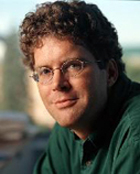| Dr. Murray Humphries (Environmental Innovation principal investigator and McGill-based co-lead), McGill University, is an Associate Professor, past NSERC Northern Research Chair, and Director of McGill’s Center for Indigenous Peoples Nutrition and Environment (CINE). Murray maintains an active and multidisciplinary northern research program, recently awarded a NSERC Discovery Accelerator Supplement, focused on wildlife biology, community use of wildlife species, and community involvement. He does research in northern Quebec, Nunavut and Yukon to study the impacts of environmental change on wildlife and human populations and the linkages between traditional and scientific knowledge. |  |
| Dr. Stan Boutin (Environmental Innovation University of Alberta-based co-lead) (FRSC), University of Alberta, is Senior Alberta Biodiversity Conservation Chair and Science Director of the Alberta Biodiversity Monitoring Institute. His applied research is designed to allow stakeholders to make ecologically informed land-use decisions and he has 20 years of experience working directly with industry and government. Some of his recent graduates have taken positions with environmental consulting companies, government agencies, and conservation organizations. |  |
| Dr. James Fyles, McGill University, is Professor and Tomlinson Chair in Forest Ecology. As Scientific Director of the Sustainable Forest Management Network of Centres of Excellence 2004-2010, he coordinated a national research partnership involving >200 university researchers with partners in federal and provincial governments, the forest industry, Aboriginal organizations and NGOs. His research focuses on forest function and dynamics and social-ecological systems. |  |
| Dr. Mark Lewis, University of Alberta, is Canada Research Chair in Mathematical Biology and directs the University of Alberta’s Centre for Mathematical Biology. He collaborates with biologists to formulate and verify quantitative models in spatial ecology, using analytical methods for dynamical systems, perturbation theory, and computational methods. |  |
| Dr. Gordon Hickey, McGill University, is an Associate Professor and Director of the McGill-UNEP Collaborating Centre on Environmental Assessment. Although an early career researcher, Gordon has already placed trainees in government, industry, and consulting companies. His Sustainable Futures Research Laboratory seeks to advance sustainable natural resource management and policy through better understanding the complex interactions between social and ecological systems. |  |
| Dr. Mark Boyce, University of Alberta, is a Professor and the Alberta Conservation Association Chair in Fisheries and Wildlife. His research focuses on wildlife conservation and management with longstanding ties to government and industry employing many of his recent graduates. Mark is a world expert on Resource Selection Function analyses. |  |
| Dr. Elena Bennett, McGill University, is an Associate Professor and Leopold Leadership Fellow. As co-leader of the Millennium Ecosystem Assessment Scenarios Working Group, she has led scenario development workshops around the world. Her research quantifies and models ecosystem services in a socio-ecological context, analyzes environmental trade-offs, and assesses environmental impacts on human well-being. |  |
| Dr. Erin Bayne, University of Alberta, is an Associate Professor who studies the cumulative ecological impacts of human activities on boreal forest biodiversity and uses GIS to spatially model these effects. Bayne has a close working relationship with Environment Canada and many of his graduates are employed in government or industry. |  |
| Dr. Nil Basu, McGill University, is an Associate Professor and Canada Research Chair in Environmental Health Sciences. Basu is an environmental toxicologist focused on exposure science and environmental epidemiology, next generation risk assessment of contaminants, the use of fish and wildlife as contaminant sentinels, and global studies concerning the community health of Indigenous Peoples. |  |
| Dr. Evelyn Merrill, University of Alberta, is a Professor with more than 25 years of research experience using remote sensing, GIS, and biotelemetry systems to study animal movement in a heterogeneous landscape, and has been project leader on 4 multi-year projects with multi-million budgets and involving multiple researchers and stakeholders in industry, government, and conservation. Some of her recent graduates are employed in government and consulting firms. |  |
Funding provided by the NSERC CREATE program.

![]()
![]()